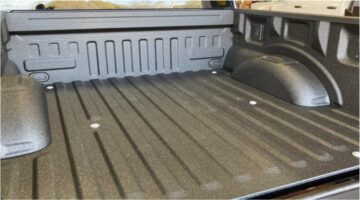Driving Aston Martin’s RapidE prototype around Williams Advanced Engineering’s parking lot is a fun yet rather pointless exercise. This car is purely their proof of concept, a mule quickly thrown together for demonstration purposes.
The first engineering prototypes will roll out next year, with the final product hitting the streets in 2019. And while the brand’s first electric model may be a limited edition of just 155 units, it shows what Aston is aiming for in the next decade. The RapidE is based on the lightest and tightest version, the AMR, with a drivetrain coming from Williams, the best name in the business this side of Rimac. That’s not a bad recipe.
Aston CEO Andy Palmer says his company isn’t trying to beat Tesla—mostly because he doesn’t consider a fully loaded Model S to be competition for the luxury car Aston is developing. He also says that while a Tesla might be quick off the line once or twice per charge, the RapidE’s drivetrain is designed to offer high performance throughout its entire driving range, not unlike a Formula E car, something Williams knows all about. Having said that, the RapidE’s claimed range of 250 miles probably only happens with a civilized foot.
Turning the Rapide into an EV is a rather complicated job both for Williams and Aston Martin. The DB9’s platform wasn’t designed to spawn a four-door in the first place. Williams Advanced Engineering put a team of 40 on the job, who—having completely dissected a Rapide’s electrical system—are now looking into ways of merging the high-voltage upgrades to the old car’s ancient 12-volt brain.
That’s no walk in the park, but the good news is the Rapide’s extended wheelbase actually helps the packaging, granting enough luggage space, and more importantly, a weight distribution similar to the regular model. What’s more, Aston says that even with a height-adjustable suspension, the RapidE shouldn’t be heavier than its V12-powered sibling.









